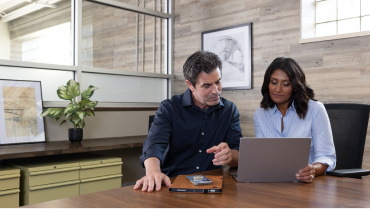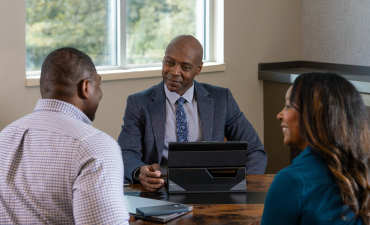In order to engage in productive, meaningful legacy planning conversations, a financial professional must take on a more significant, immersed role. We refer to this role as the “trusted partner” — one who moves beyond the identification and implementation of tactics in the financial planning process to conversations that elicit the deep goals of the client. These deep goals reflect the values-based motivations that drive wealth accumulation and legacy planning decisions.
Because deep goals are identified in community with others, the trusted partner develops close relationships with the people in the client’s inner circle. The trusted partner is also at the nexus of the client’s professional relationships. In essence, they become the keeper of the vision, coordinating the efforts of others, such as an attorney or CPA, who also support the client.
Elevation to the role of the trusted partner is a process that might require increasing current levels of trust. Given trust’s importance, we want to look beyond what we think we know about it and get a more empirical understanding of the concept. This paper will explore the nuanced anatomy of trust and its value to future client interactions. Supported by recent research, these insights will enable us to build a road map that financial professionals can use to effectively build and maintain client trust.
The anatomy of trust
Trust involves vulnerability
The thread that runs through every form of trust is vulnerability. When we trust someone, we make the decision to reveal ourselves in some way with the belief that the other party will not take advantage of us or exploit any weakness we may show.
We can make ourselves vulnerable to others in two ways:
- When we give them access to important information, things and people
- When we give them control to act on our behalf
Giving others access to important information about ourselves is the form of vulnerability that is the basis of the trust we have with our partners, families and close friends. We reveal information about our hopes and dreams, our fears and insecurities, our values and beliefs. We show people who we are.
We also make ourselves vulnerable when we give others access to things we value, such as loaning your car to a friend. Perhaps less obviously, we risk vulnerability when we provide others with access to people we value, which is why referrals are a form of trust. When clients refer friends to a financial professional, they are “putting themselves out there” by endorsing the financial professional’s skills and integrity. That endorsement is a building block of trust in the new relationship — and it is much easier to build trust when that stone is in place.
We most certainly make ourselves vulnerable to others when we cede control to another person to act on our behalf. A relevant example is the discretionary authority a client can give to their financial professional. The client is vulnerable in that they do not have a line of sight into the actions the professional is taking on their behalf and might lack the ability to assess whether those actions are in their best interest.
This information asymmetry is nobody’s fault. It’s simply due to the professional having knowledge that the client does not. Most of our professional relationships involve this level of information mismatch, as anyone who has tried to read their medical results can attest to. Efforts in the financial services industry toward greater disclosure of information are designed to increase transparency and client trust.
Trust is indicated by client behavior
Nobel Prize-winning economist Paul Samuelson famously said that we truly know people’s preferences only by what they choose, not by what they say. The insight is that the presence of trust within a relationship should lead to different behavior patterns than would occur in its absence.
Generally, people understand that trust varies by degrees. Trust can be increased by either “going broader” or “going deeper.” As trust deepens, the client is willing to be more vulnerable in the relationship with a trusted partner. A deeper level of trust could drive client actions, such as sharing more personal information. Conversely, trust is broadened when a client is willing to expand the scope of the relationship. A broader level of trust might involve the client entrusting their financial professional with a greater portion of their assets or allowing more discretionary authority to act on their behalf.
Trust does not happen in a vacuum
It is certainly possible for an individual to risk vulnerability with a person they don’t know well enough to trust. For example, we might freely hand over sums of cash to a bank teller or disclose private information to a medical assistant. We typically feel safe doing so not because of confidence in that particular person but because of confidence that there is an effective system of checks in place. In other words, we trust the system rather than the person.
Within the financial services industry, the trust-building process is influenced by a client’s perceptions. What are their views regarding the trustworthiness of the financial professional’s firm? How do they perceive the financial services industry as a whole? Do they have confidence in the set of institutions designed to protect their interests?
Both private institutions (such as financial services firms) and public institutions (such as regulatory organizations) attempt to reduce the level of trust required for a client to make that leap of faith. They design rules to help ensure that financial professionals do not exploit their clients. These rules operate as deterrents, increasing the consequences for those who harm their clients. However, the amount of trust required of a client is reduced only if they believe that the institutions and deterrents are effective in protecting their interests.
A client’s pathway to trust is also affected by a variety of factors that are unique to that individual. These factors affect both their level of willingness to build trust and how they build trust; this is their trust-building mode. As trust increases, clients then feel more comfortable to express their deep goals and take the next step in the partnership.




